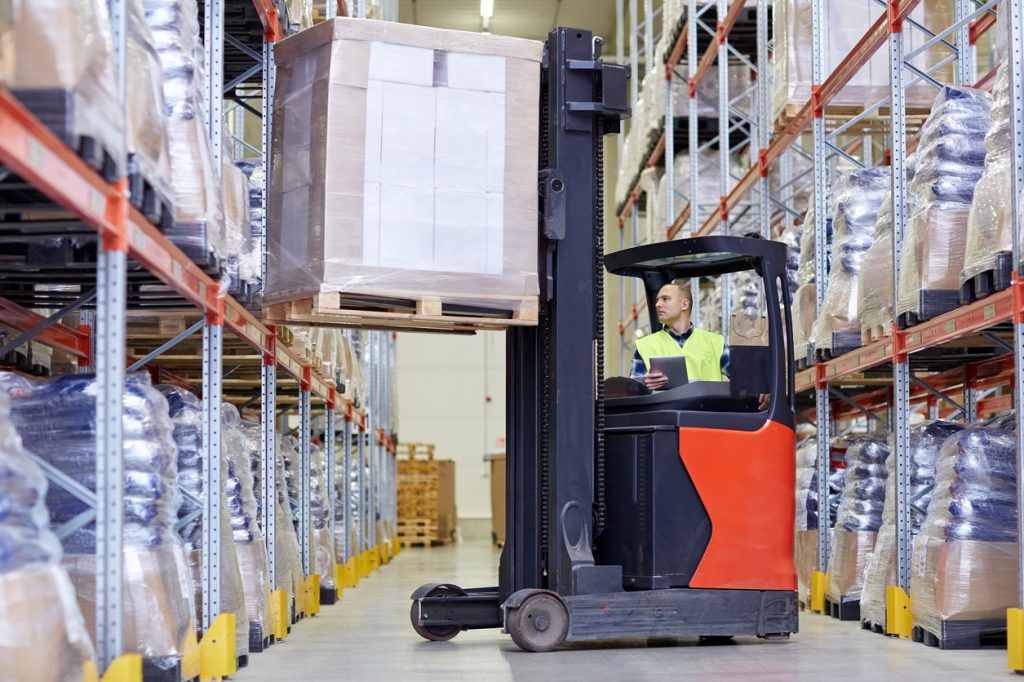Blog
8 Common Warehouse Hazards (And How You Can Avoid Them)
While it’s not as dangerous as injuries like commercial fishing or logging, anyone who deals with storage equipment can tell you that working in a warehouse still has its hazards.
Warehouse workers face a number of potential dangers, from forklift accidents to repetitive motion injuries. Here are eight of the most common warehouse hazards according to OSHA, and how you can help avoid them.
1. Dock-related mishaps
Injuries can happen a few different ways on a dock, from employees being struck by equipment or falling products to forklifts accidentally driving off the dock.
Solutions include:
- Driving forklifts slowly
- Making sure dock plates are secure and can safely support the load
- Refraining from backing up forklifts to the edge of the dock
- Putting up visual warnings at the edge of the dock
Warehouses should make sure that the ladders and stairs on the dock meet OSHA regulations.
2. Forklift accidents
Roughly 100 workers a year die in forklift accidents, according to OSHA, to say nothing of the tens of thousands of injuries resulting from forklift operations. A large number of the fatalities are due to forklift turnovers.
Solutions include:
- Making sure all operators are properly trained, evaluated and certified
- Driving safely, keeping speeds to 5 mph or lower, and going slow in areas that are congested or have slippery surfaces
- Never driving up to a person standing in front of a fixed object such as a wall or pallet racks
- Never letting workers under 18 use a forklift
- Making sure all forklifts are properly maintained, and examine them before use to check for hazardous conditions that would make operations unsafe
- Providing guardrail barriers to protect against hazards like open pits, tanks and ditches
- Making sure each driver uses a seatbelt
- Not allowing horseplay or stunt driving
- Not handling loads greater than the forklift’s weight capacity
And finally, drivers should follow safe procedures for picking up, putting down and stacking loads.
3. Conveyors
According to OSHA, “workers can be injured when they are caught in pinch points or in the in-going nip points, are hit by falling products or develop musculoskeletal disorders associated with awkward postures or repetitive motions.”
Solutions include regular conveyor inspections, developing lock out procedures, making sure pinch points are guarded, and providing proper lighting and working surfaces around the conveyor.
4. Material storage
Simply put, these injuries are the result of improperly stored materials falling on workers. They can be avoided by placing heavier loads on the lower shelves of your storage equipment, stacking loads evenly, and removing objects one at a time.
5. Lifting and repetitive motion injuries
Workers can sustain injuries due to overexertion or improper lifting, or due to repetitive motion. You can prevent these injuries by providing ergonomics training and instructing workers to seek assistance if something is too heavy for them to lift on their own.
Other solutions include:
- Making sure workers have enough overhead lighting
- Keep floors clear of slip/trip hazards
- Provide workers with ergonomics training
You can also protect workers by repositioning shelves and bins to reduce the amount of lifting required (this is something adjustable wire shelving can help with)
6. Hazardous material spills
Workers are at risk for chemical burns when hazardous material spills occur. Solutions here include:
- Keeping a Material Data Safety Sheet for each chemical that workers are exposed to, and following its instructions for handling chemicals
- Train employees on the dangers of each chemical you store, and on how to clean up spills and dispose of used materials
- Store chemicals safely, and away from areas where forklifts operate
Your warehouse should have a written spill control plan and provide spill clean-up kits and protective equipment, and make sure employees use them.
7. Charging station risks
Without proper guidelines, workers are at risk of fire/explosions at charging stations. Solutions include:
- Banning smoking and open flames near charging stations
- Providing proper ventilation to release fumes from gassing batteries
- Making sure fire extinguishers are on hand and fully charged, and that workers have access to gloves and other protective gear
- Keeping forklifts properly positioned and braked before changing or charging batteries
- Follow the proper procedure for refueling gas or propane-powered forklifts
You should also provide an eyewash station and safety shower for workers exposed to battery acid.
Greystone Equipment has the warehouse storage equipment to keep your workers safe
A safe warehouse is a well-organized warehouse. Let Greystone Equipment help you protect your workers and make operations more efficient with our pallet racks, wire decks, wire shelving and other storage equipment.
Contact us today to learn more about the solutions we provide.

